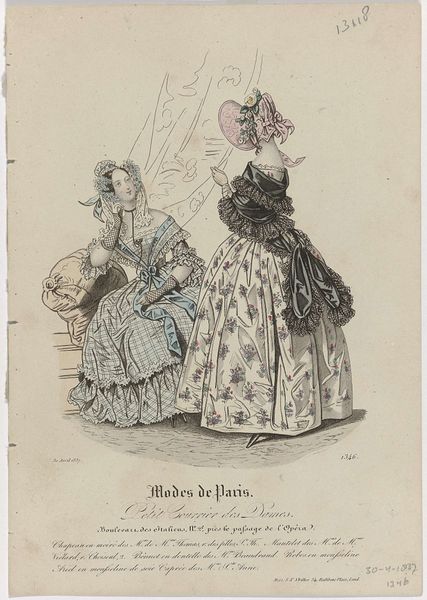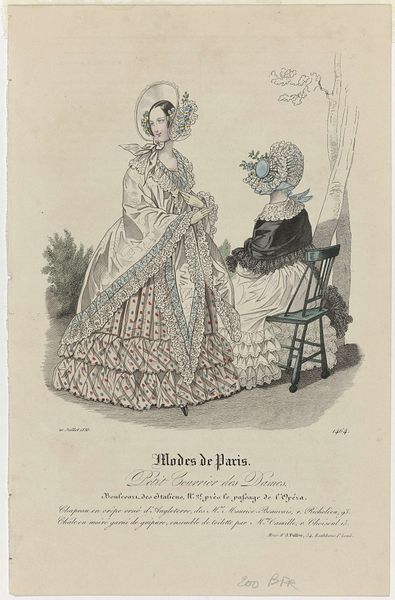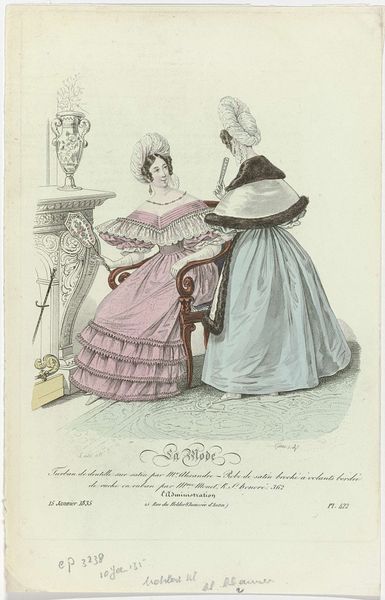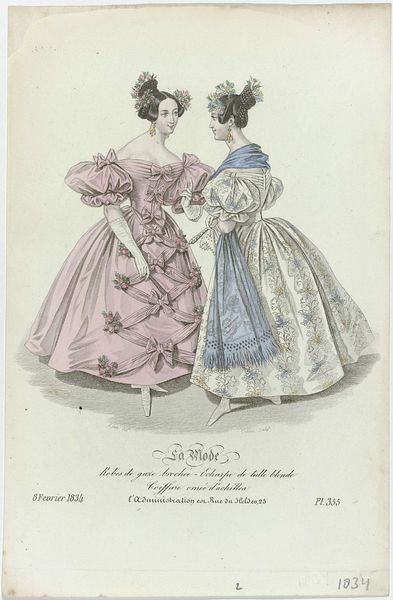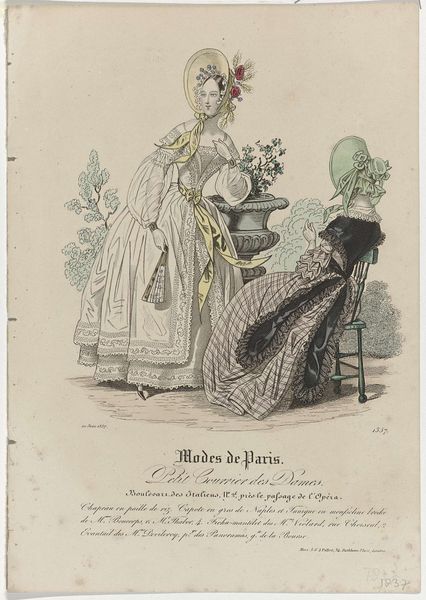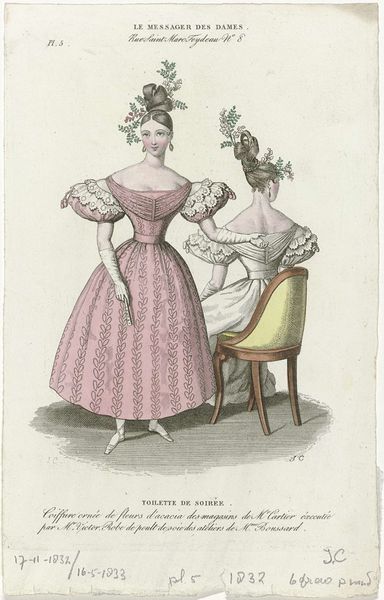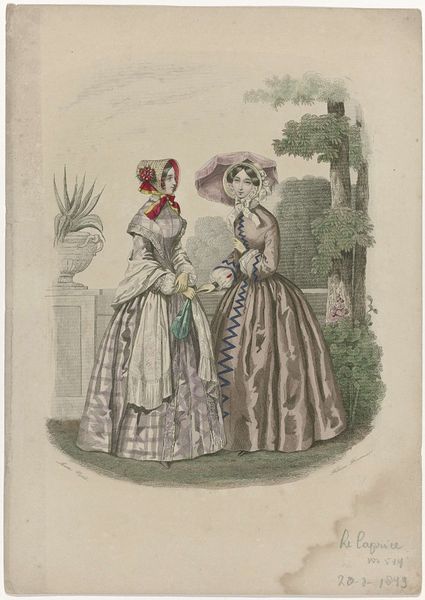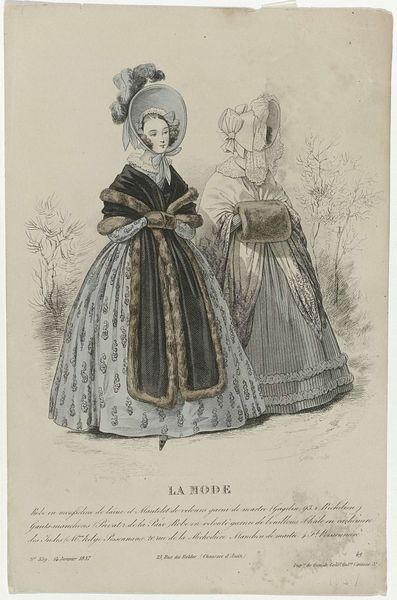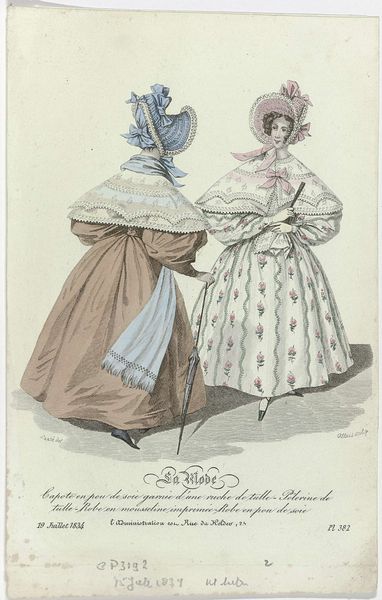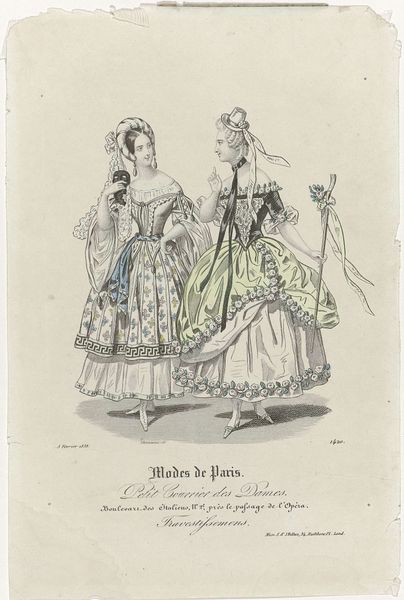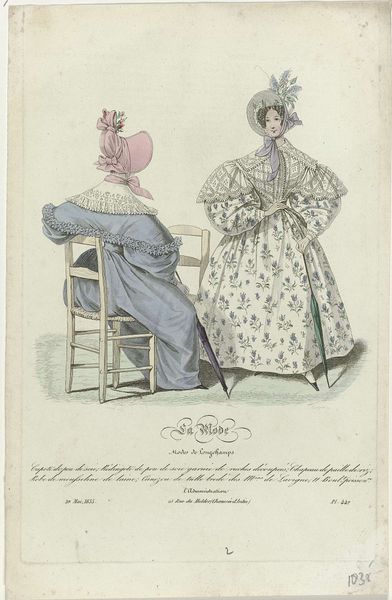
drawing, mixed-media, print
#
portrait
#
drawing
#
mixed-media
# print
#
romanticism
#
watercolour illustration
#
genre-painting
#
dress
Dimensions: height 245 mm, width 158 mm
Copyright: Rijks Museum: Open Domain
Curator: Good morning. We're looking at a print titled "Petit Courrier des Dames, 15 août 1840, No. 1663" created in 1840 by an anonymous artist. It appears to be a fashion plate, rendered in mixed media of drawing and watercolor illustration. Editor: My first thought is abundance, a profusion of fabric and detail! The ruffled dress on the right, in particular, practically floats with its layers. Curator: Indeed. Focusing on the compositional elements, the artist presents us with two distinct figures. One stands, adorned in lace and ruffles, while the other sits in a striped gown. The formal verticality of the standing figure contrasts with the more relaxed horizontal lines of the seated figure's attire. Editor: And the material culture embedded here! Think of the labor involved in creating such intricate lace, the construction of those meticulously striped fabrics, the whalebone corsetry underpinning those silhouettes. It speaks volumes about class, leisure, and the economies of fashion in 1840s Paris. Curator: I am also struck by how line functions in the dress construction and how line can be considered an abstraction. Notice the recurring lines, both in the striped material and the ruffles creating volume, against what might be an actual waist line of each woman. Editor: These aren't just aesthetic choices; they are tied to the industrial processes, the availability of textiles, the specific skill sets valued. We often forget how deeply enmeshed art is with production. It reminds us of what craft meant for women’s work at the time, making their contributions valid but still as a minor form of creative output. Curator: Yes. I mean, while appearing light and carefree, each precisely placed line, hue and construction choice dictates the way these gowns sit and shape the wearers. They speak a language all of their own that a contemporary viewer is keen to interpret and respond to. Editor: Looking at this print, one gets a feeling that this piece serves a specific material and economic need within a class and demographic. It goes beyond being an aesthetically interesting period work on paper. Curator: Absolutely, by deconstructing the various design elements and its composition, it speaks not only of a beautiful era, but of how aesthetics and class are woven so closely together. Editor: An interesting proposition, indeed.
Comments
No comments
Be the first to comment and join the conversation on the ultimate creative platform.
